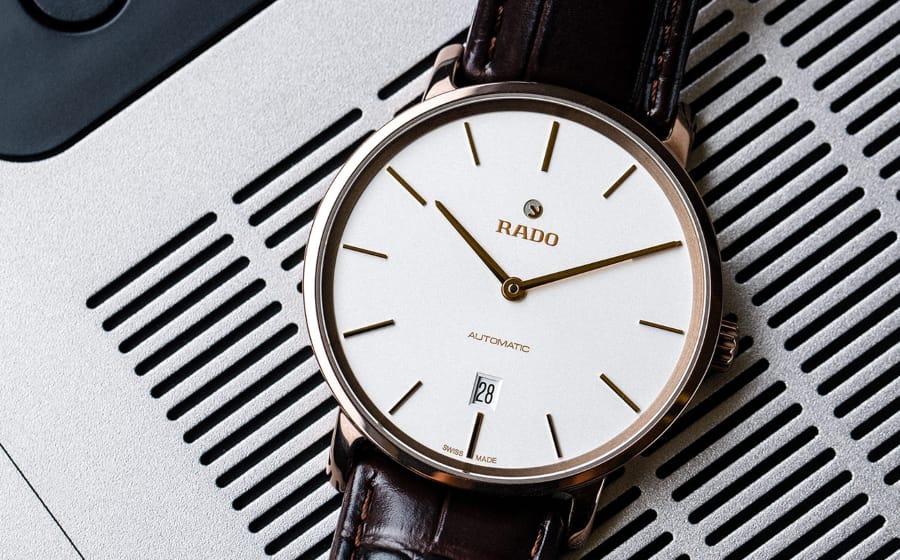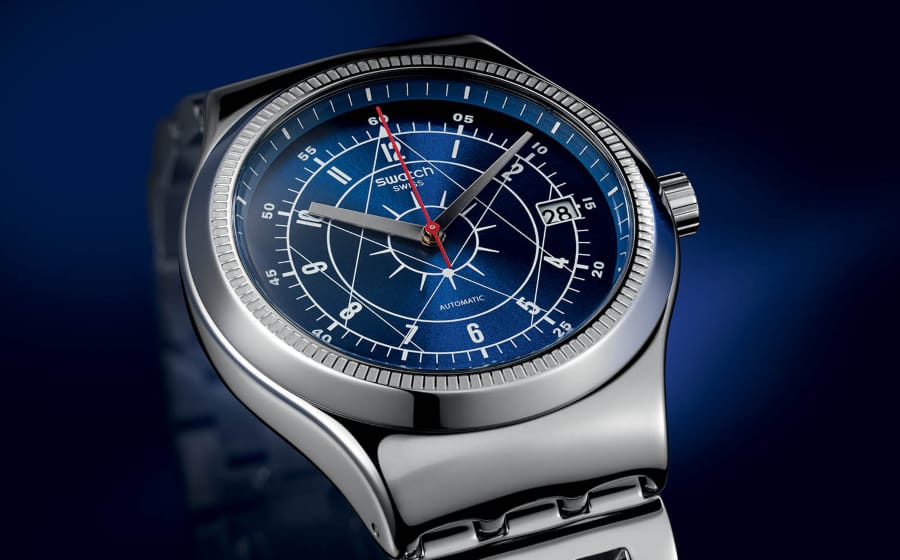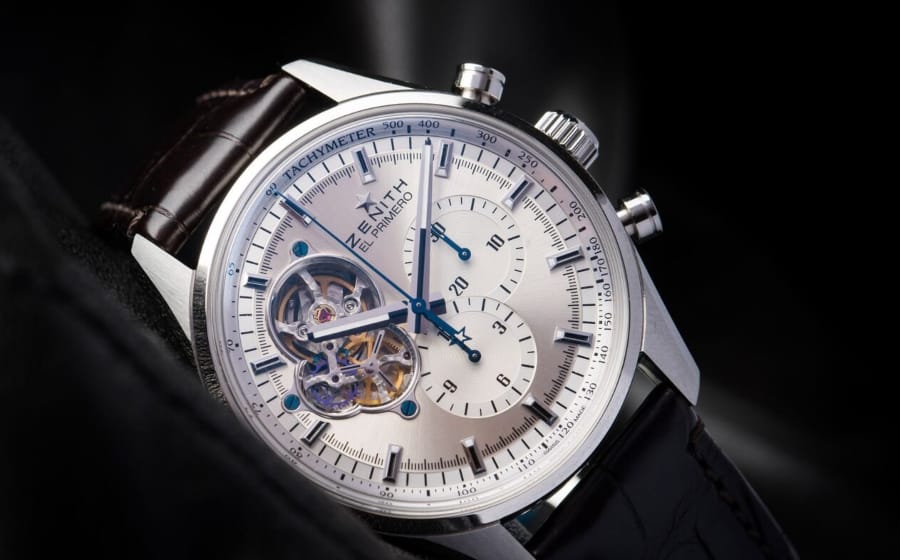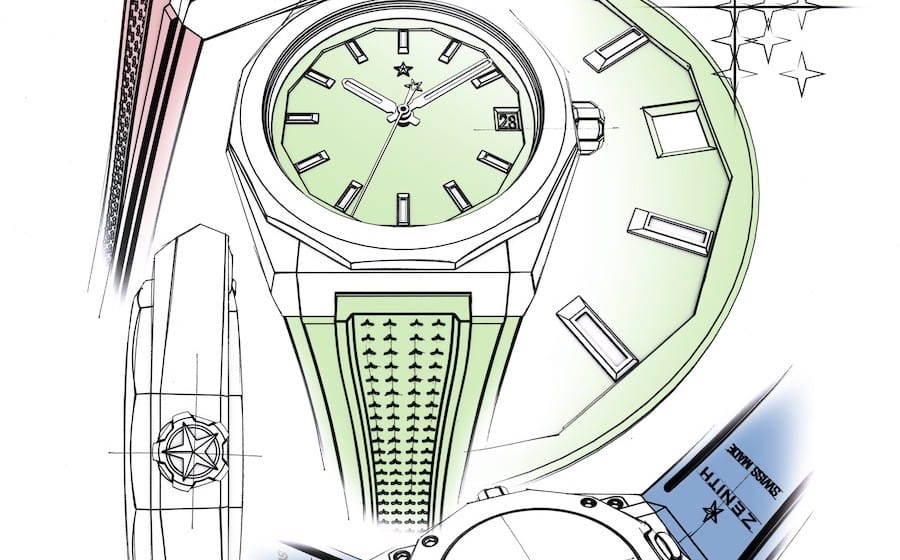
The beauty of the watch industry lies in the many great watchmaking achievements that make modern timekeeping what it is today. Individually, watchmakers innovated for breakthroughs that benefited themselves but as developments spilled over, it inadvertently benefitted the watch industry collectively. Here are four watchmakers that shook the watchmaking industry with larger-than-life achievements.
Pictured Above: RADO Diamaster Thinline Automatic
In the 80s, RADO revolutionised the watch industry when it introduced high-technology ceramics into watchmaking. Unlike ceramics used in pottery, the ceramics RADO used are made of pure materials and metal compounds, resulting in watches that were virtually scratch-proof and incredibly light weight on the wrist.
RADO’s continued efforts in developing its know-how in ceramics solidified its status as the master of ceramics in the watch industry. Other watchmakers took note of the breakthrough in material technology and spurred them to develop ceramic components such as watchcases and bezels for their watches.
The RADO Diamaster Thinline Automatic embodies RADO’s pioneering spirit with a proprietary Ceramos case. The unique material composition of Ceramos – 90% ceramic and 10% metal alloy – gives the Diamaster Thinline the lightness and durability of ceramic and the irresistible sheen of metal.
—
Swatch Sistem51

It is hard to consider Swatch to be heavyweights in the watchmaking industry given the fact that they manufactured colourful plastic quartz watches. However, it shook the industry thanks to its simplified approach of manufacturing quartz watches comprising of 51 components.
30 years on, Swatch made another breakthrough when they released the Sistem51 – an automatic watch comprising of, you guessed it, 51 parts. Born out of advanced engineering, innovative research & development, and creativity, the Sistem51 was the first watch to be entirely manufactured in a fully automated assembly line.
Since its plastic counterparts that were unveiled during BaselWorld 2013, Swatch made further inroads to the Sistem51 collection with the Sistem51 Irony line that featured a robust stainless steel case and bracelet as well other subtle tweaks to its mechanisms.
—
Omega Speedmaster

The relationship of space exploration and Omega officially began during the Gemini III mission on 3 March 1965 when Omega Speedmasters were strapped to wrists of astronauts Virgil Grissom and John Young during their maiden trip into space.
It was on 20 July 1969 however that Omega and space became inextricably linked when Apollo 11 landed on the moon, at an era when reaching the moon seemed possible only in dreams. As Neil Armstrong uttered his words of immortality, the Omega Speedmaster strapped to his spacesuit became known as the Moonwatch by watch aficionados the world over.
The historical achievement of Omega and the Moonwatch cannot be underestimated as it has spurred other watchmakers to develop watches for space exploration, one such watchmaker is Seiko.
Similar to the Zenith El Primero, Omega produced numerous references of the Speedmaster, but they stayed true to the design ethos of old – having a tachymetre scale bezel. The appearance of the Speedmaster has since become unmistakable and undeniable.
—
Zenith El Primero

If you ever wondered why you keep hearing the name El Primero when Zenith is mentioned, it is because of the legendary El Primero calibre that Zenith developed in 1969. It was the first-ever integrated automatic chronograph movement with a high-speed balance wheel operating at 5 Hz (Hertz) per hour.
What makes an automatic or mechanical watch tick is a component in the mechanism known as the balance wheel – a weighted wheel that rotates back and forth. The higher the speed, the more precise the timekeeping will be. During the early days of watchmaking, the balance wheel of watches operated at 2.5 Hz or 3 Hz per hour, making the El Primero an extremely accurate timepiece to own.
Of the many iterations of the Zenith El Primero that were manufactured, those with an open-heart are one of the world’s most iconic chronograph watches. The dial cut out allowed viewers a glimpse of the high-speed balance beating in all its glory. Another hallmark of the Zenith El Primero is its chronograph central seconds. The high-speed balance meant the chronograph hand is capable of recording one-tenth of a second.







